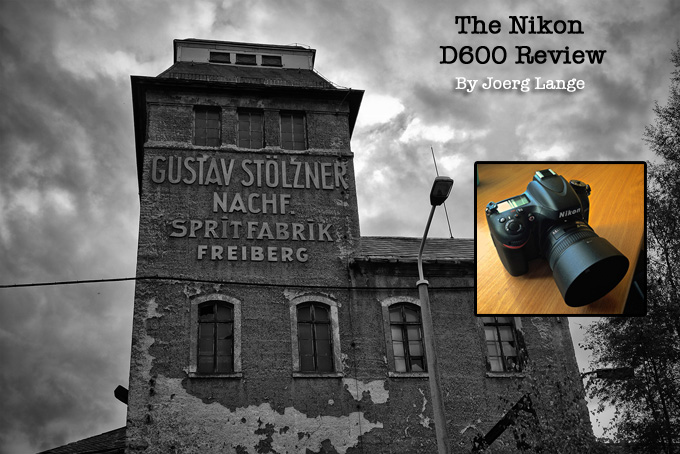
The Nikon D600 with Tamron 24-70 2.8 – Fullframe for the rest of us
By Joerg Lange – His Site is HERE
–
Some short informations about me: I’m from Germany, a 35-years-old amateur photographer (or enthusiast :-)). Some years ago I started photographing and since that I’ve learned more every day. I follow a lot of blogs and sites to keep myself up to date or to simply dream a little bit and watch good pictures, like I do often with this site – dreaming about an M9 and enjoying the b/w pics.:-)
Once upon a time I was happy with my small Canon EOS550d (Rebel T2i). Then the day came when I visited your page and my first reaction to the whole Leica-stuff was: “Are you kidding? 5000 Euros for a camera which looks like from 1954?”. On the other hand I saw the beautiful pictures, this sharpness, this detail, the small size (form factor) and I could not get this out of my mind.
[ad#Adsense Blog Sq Embed Image]
But I knew that a Leica would never be affordable to me, so I needed a plan B…
The first idea: buying one of the small power packages like OM-D, Fuji X100 or X-Pro1 (I even thought about a Leica Digilux 2). On the other hand… I was impressed by the IQ the M9 delivers with its big sensor and the possibilities to play with the shallow depth of field even with not so fast glasses. So finaly the decision was: one day I would buy some full-frame-camera, perhaps a used 5D MK2 (even if its heavier and bigger).
A little later the rumors about the Canon 6D and Nikon D600 came out and after a closer look onto the technical specs it became clear, that the D600 will be my next big love. It took me several days to convince my wife (luckily she is so satisfied with the first portraits I shoot that she loves the camera also – puh).
–
The Starting point
This is a short review of the first weeks with the camera and the Tamron 24-70 2.8. I will not cover the technical aspects as this was done by many sites on endless articles. I’m interested mainly in look, feel, usability and image quality. I’m not a pixel peeper – I look at the image as a whole. And I prefer making pictures rather of talking about the camera. So there are many pics in this review and not so many words. 🙂
As I said earlier I owned a Canon 550D before (which is the similar sensor to 600D, 60D and 7D) and everything I say is compared to those Canon-sensor (a very common one). From this point of view – and as a conclusion before the end (spoiler), the D600 has the far better IQ with a much greater dynamic range and better colors – it is simply a class of its own. But first things first…
–
The Lens
At the moment I use the stabilized Tamron 24-70 2.8 as my “daily glass”. It is fast, steady, splash proof and a little bit cheaper than the Nikon 24-70 (which is not stabilized!). It is a good lens but it is rather heavy and together with the camera I carry around aprox 1,7 kg. Since I use a blackrapid strap this is … lets say tolerable.
The Nikon with Tamron 24-70 2.8 – my standard glass
A few days ago I also bought the beautiful Nikon 50mm 1.8g – and this combination rocks! It’s around 0.9kg (camera + glass) and this package fits perfectly in my hand. This is the combination I will use in the future mostly for travel / streetshots. Unfortunately the weather in germany was ugly the last days so there are no pics with the 50mm in this review.
This is the D600 with Nikon 50mm 1.8 – a small handy power package.
The Camera
The Nikon feels… professional to me (Nikon says its a consumer model). It fits in my hand nicely and the look and feel is very solid. To be honest – it is no 5D Mk3 or so (yes, there are plastic parts – who cares? We can’t make anything of Krupp-steel unless you have a trolley to carry the stuff around) but it feels massive and it is sealed against dust and water like the bigger D800. So there should be no problem taking it to alaska, into the desert or to russia 🙂
AND it is not as heavy as it’s bigger brothers – which is a huge benefit in my eyes.
Some said, the plastic around the mount is not able to support a heavy professional lens – such a lens would cause a bending of the body. This is nonsense. The Tamron I use is really heavy and I never felt or saw anything that could confirm those speculations.
The Nikon has dedicated knobs for every function, and for me – who comes from a small consumer DSLR – this is very comfortable. No fiddling around with two fingers on three keys to adjust something. After a few hours the handling will become second nature and after a few days its like an extension of your mind. You no longer think, you just shoot. Sure it is not as comfortable as the great M9 with its Apple-like-usability, but the important functions are all at your fingertips and the other buttons you can ignore… 🙂
And it is fast – not only 5.5 pics per second (full frame) but all the other stuff too… startup-time, reaction, shutter lag and so on.
–
Viewfinder
The optical VF on my old 550D was great – so I thought. Until I used the D600. The D600-VF is bright – very bright. It covers 100% (unlike the Canon 6D!) and it feels as you would look onto a big canvas in front – gorgeous. Compared to that, the 550D-VF is a peephole.
Beyond the picture all necessary informations are visible, it is even possible to show some kind of water-level, so no more crooked photos.
–
Exposure
The D600 use Nikon’s 3D color matrix metering II exposure metering system, operating on data from a dedicated 2,016 pixel RGB sensor (should be the same as the D7000, as far as I know). The system has a working range of 0 to 20 EV. It works – in my opinion – very good (I mostly use the matrix-mode). But it seems there is a tendency for a slight overexposure. On daylight I shoot with a exposure correction of -0.3 / -0.7 EV, on dusk, dawn or in the evening the exposure is perfectly good.
Shooting a dark scene with my Canon – I always had to fiddle around to get the right exposure. No problem for the D600, even in P-mode. The scene looks exactly like reality. I often noticed, that especially in dark scenes, the camera brings out a picture which corresponds almost perfectly with the real scene – so what you get is what you see – AND THIS IS GREAT!!
46mm, A6.3, ISO 100, 1/160
–
70mm, A2.8, ISO 500, 1/80
–
24mm, A4.5, ISO 100, 1/80
This picture was taken in matrix-mode. The lighting condition is exactly like reality without post processing.
–
Autofocus
The focus unit contains of 39 focus points (9 cross type). It works fast and save. The focus sensors are all grouped together in the very middle of the viewfinder, which could be a disadvantage when focusing on moving objects or composing a scene. I’m used to take the middle focus point only, so this is no problem to me, (perhaps for other people).
Even the contrast autofocus in lifeview is comparatively fast (but not really usable for video).
For me it was a little bit hard as I started – this big sensor has a very shallow DOF and I had to focus more carefully.
50mm, A5.6, ISO 100, 1/125
–
Sensor and IQ
Simply awesome. Some say, it is a Sony-Sensor, some say it isn’t. Nobody knows. But who cares… it captures a great dynamic range. It got 3rd place in DxOMark (after D800 and D800E). There are rich details in every area, from the brightest to the darkest. The lowlight quality is outstanding. Up to ISO 6400 you will hardly see any noise/grain.
24mm, A2.8, ISO 1600, 1/25
The room was very dark and the light from the window very bright. The resulting picture is well balanced.
36mm, A2.8, ISO 250, 1/40
Ready for christmas time? 🙂
48mm, A2.8, ISO 6400, 1/125
At ISO6400 subtle noise starts. I dialed max ISO 3200 into the camera (when I shoot in P/A-Mode) which is enough for most situations.
Never before I have seen such a seamless transition between bright and deep black, no noise, no banding. A good example is brown hair. My old 550D mainly showed brown mud – the D600 shows incredible detail.
70mm, A2.8, ISO 100, 1/800
–
70mm, A2.8, ISO 100, 1/250
–
68mm, A2.8, ISO 450, 1/80
I like the details in my wifes hair and the seamless blending into deep black at the background. There is no noise, no banding.
58mm, A2.8, ISO 100, 1/320
Here are some other interesting examples. The following pictures where captured in our home cockpit and those lighting conditions are a camera-hell. The Nikon performed great, as you can see. I could show you a LOT of ugly photos done with several cameras (for example Canon 7D) in this situation, only a few managed to capture details through the entire range (from the bright screen down to the dark pedestal).
24mm, A2.8, ISO 360, 1/25
There are much more informations in the dark parts, but I lowered it a little bit to get a more natural look.
24mm, A2.8, ISO 200, 1/25
Look onto his face and the landscape. In my opinion the Nikon nails the white balance perfectly to the point. With the canons the landscapes/faces were blue/magenta anf the lights red.
24mm, A2.8, ISO 720, 1/25
–
24mm, A2.8, ISO 450, 1/25
This picture is a hell for every camera due to the lights and shadows. The Nikon performed very well and there are many more details hidden in the blacks.
Another example for dynamic range: People often want to know, if the next picture is an HDR. No, it isnt. One RAW delivered it all. Often it is simply no longer necessary to shot an HDR, one good exposed RAW is enough.
26mm, A2.8, ISO 100, 1/40
This is no HDR. Some short processing with NikSoftware Color Efex (sunlight, vignette, contrast) and that’s it.
I love the Nikon colors. In difference to the the 550D, the colors are clear, strong, more naturally and – its difficult for me to say in your language – kind of separated to each other. Even in lowlight, at night, you are able to see nearly all the colors. One may wonder why I state that, but just try a long time exposure with the 550D at night or late evening: you’ll see not much more colors than white, yellow and blue!! Also a big opportunity here for the D600!
70mm, A2.8, ISO 100, 1/400 – full size image
–
24mm, A2.8, ISO 100, 1/200
–
24mm, A2.8, ISO 100, 1/160
Those colors in combination with the high dynamic range and sharpness is a win-win-situation. The IQ is just great, miles away from anything I have seen before, similar to machines like 5D Mk3 or the D800. This is also great for b/w-pictures – you get very sharp and detailed b/w out of photoshop or filters like Silver Efex. I’m really looking forward to do some serious street shots with my 50mm prime!
46mm, A4.5, ISO 100, 1/80
–
26mm, A2.8, ISO 200, 1/30
–
RAW vs JPG
I must confess, I was a little bit disappointed as I first saw the JPGs right out of cam. They don’t look as good as it could be, kind of flat, little bit on the soft side, not so punchy one could expect. So I decided quickly to use RAW and everything went for the better.
Processing the RAW, I often lower the exposure a tiny little bit and increase the contrast another tiny little bit. The great dynamic range of the sensor sometimes produces some kind of “flat look” and with those corrections I’m back on track. After that, I’m increase the sharpness about 10% and the colors about 10-15% and then the pictures begin to shine. Fat, natural colors, good contrast, sharpness, details details details. It often makes sense to push the blacks a little bit in.
70mm, A4.5, ISO 100, 1/320
You can add a lot of depth to the pictures because of the big sensor
52mm, A4.0, ISO 100, 1/60
I bought the D600 some days after release and so I had to use the Nikon-tools for developing RAW (the update for Adobe / Aperture came later). First time I didn’t like the Nikon stuff – CaptureNX2 / ViewNX – and I was happy when the Aperture-update arrived. But then as I used Aperture I noticed soon, it failed to deliver the same great quality from the RAWs as the Nikon software. With CaptureNX2 / ViewNX I got better sharpness, subtle details and colors. I then did a little bit research at the internet and found, that Nikon keeps a secret around it’s RAW format (NEF) and Adobe / Apple have to do some kind of reverse engineering to process it. So the only one who is able to squeeze out the last bit of quality is the Nikon software.
There are other advantages too. The nikon software uses the same picture styles and features as the camera itself and for example the D-Lighting (lighten up the dark parts) delivers better results as the shadow control slider on aperture.
44mm, A7.1, ISO 100, 1/200
So everything could be cool and everyone could use the Nikon software – but as everytime in life, things are more complicated. Aperture and Lightroom are great in terms of storing / organizing / sorting (the whole workflow) and that is the point where the Nikon stuff is an epic fail. It is made for RAW-editing only and that’s it. So one has to decide which is more important – the whole workflow thing (go with Aperture/Lightroom) or the last bit of quality (go with Capture NX2).
–
What else?
But lets get back to the camera. There are many smaller goodies, for example the two card slots or the onboard flash – very useful and maybe saves your life from time to time…
There is a nice time-lapse mode. You are able to program the camera for shooting a photo every n seconds and then you can immediately playback in different speeds. The system records the pictures as a 1080p H264 video – a great timesaver since you no longer have to do it manually later. A good example for this function is here, an absolutely gorgeous video made entirely with the D600.
48mm, A8, ISO 100, 1/125
It has the whole video-stuff, 1080p / 720p with 25 / 30 / 50 / 60fps H264 with all those bells and whistles. You are able to record a clean signal via HDMI (but lets talk about that a little later, since there is a major problem at the moment).
The video quality is better in terms of resolution, detail, color, again dynamic range as the Canon 550d/600d/60d/7d BUT yes, there are aliasing and moire (similar to D800). This is the price for the higher details. If you cannot live with that you have to take the 5D MK3 – no aliasing and moire, BUT a very soft picture. So you have the choice: soft image (5D MK3) vs sharper image but aliasing and moire (D600, D800). I tend to the second option because I like details… 🙂
70mm, A8, ISO 100, 1/250
Colors of autumn
–
What is not so cool?
You have a great HDR-function but it is only usable in JPG-mode and it combines only 2 (not 3) pictures. I for myself would prefer to do different exposed pictures manually to get real good HDR-quality. For most cases HDR is almost not needed because of the great performance of the sensor. Shoot in RAW instead, there are plenty of informations!
Next, there are issues with the HDMI-out at the moment. The clean HDMI-out is cropped a little bit, there is a black border around – and this is not as advertised. The community is waiting for a statement from Nikon regarding this issue. Maybe we’re lucky and it will be fixed with an firmware-update
Then there is the aperture-problem. When you shoot in liveview (both in video/photo-mode) you are not able to adjust the aperture. For adjusting it, you have to leave the liveview, change aperture and go back. This is a little bit ridiculous, since the D800 doesn’t have this issue, but it seems it’s marketing – a segmentation between the D600 and D800.
I use the liveview mode for video only and I think about this issue as a kind of aperture priority mode. I look at the scene before and decide which aperture to take, then I switch the liveview on.
Last: since WLAN is not right built in (like in the Canon EOS6D!) you can buy an extra little black box for plugin into the USB-connection (WU-1b). Using this you are able to connect your smartphone (iPhone, Android) to the camera and see the viewfinder picture mirrored onto your phone/tablet. You can even touch onto the picture and the camera is focussing onto the touched position, you can then shoot the picture from your device and you are able to send pictures from the camera to the device. While this is really cool, you are not able to do some adjustments like aperture, ISO or whatever remotely nor can you send the pictures to an PC/MAC. Seems, for doing this you need the more expensive stuff.
38mm, A8, ISO 100, 1/250
–
70mm, A2.8, ISO 200, 1/80
Where is the child??
–
Dirty little machine…
The biggest problem occured some days ago: massive amounts of dirt on the sensor (a 4 weeks old camera!). I was a little bit shocked in the first moment and googled around. This seems to be a common problem and that is not good. Nikon said, there is no problem. But if a massive amount of expensive cameras are delivered with a dirty sensor there IS a problem – at least at Nikons quality management. Hot discussions going on at DPreview (and other pages). It is known that the dirt comes from somewhere inside the camera and the mirror or shutter finally throws it onto the sensor. So after a first sensor cleaning everyone has a sharp eye on the camera if the dirt comes back and/or if the amount of dirt decreases over time (hopefully it is only a small amount of dirt arose from the production process). So if you are about buying the camera, wait a little bit longer and watch this issue. I’m not happy to say this (because I love the machine) but thats the truth.
–
Conclusion
Okay, I love the camera, I love the IQ and I love how it fits into my hand. It is a small (not much bigger than the Fuji X-Pro1) power-package, a photo-machine. It has not the sex appeal or the soul of a Leica but it is a reliable partner – it delivers very good quality in any situation – no more no less.
If you want a full frame camera and you are on budget, take this camera and you will be happy. Besides all the technical aspects, some goodies, some flaws, the IQ is just great. It has not the huge file size of the D800 – which for me is simply to much – but you get out the same great pictures. But beware: don’t shoot JPG – you will give away much potential. Shoot RAW and tweak the files a little bit – and you will be satisfied 200%.
If you don’t want a full frame sensor, forget this type of camera and go with a Olympus OM-D / NEX / Fuji whatever. For anything smaller than full frame you don’t need a DSLR any longer. Period.
–
So who should / could buy it?
Everyone who wants to shoot fullframe on budget. Everyone who wants the best possible fullframe IQ on budget. The camera is for every level of experience: it has many simple modes / situation presets for the beginner and it is able to satisfy even the professional user. It has a flash onboard (unlike the Canon 6D!). As a beginner, you are able to grow with the camera – you will never need another one and you will hardly reach it’s limits. It is a good investment. It is fullframe for the rest of us.
56mm, A8, ISO 100, 1/100
–
24mm, A8, ISO 100, 1/100
–
66mm, A2.8, ISO 125, 1/80
Best regards
Jörg
See his website HERE
PS: From time to time there are discussions regarding the price gap of around 500 Euro between the D600 and the D800. Very often I read things like “forget the D600, add the 500 bucks and take the D800” or “the D600 is a disappointment because its only 500 bucks cheaper than the D800”. Sometimes there are recommendations for people who want to upgrade from their small consumer DSLR to leave the D600 out and buy the D800 instead (because of the small price gap). In my opinion such advises are careless. The D800 is a big, chunky and heavy DSLR for professional use. It makes no sense, to spend your last buck on buying a 3000$-body with a standard kit zoom (because no money left for a good glass) and then haul it around in your holidays shooting 36-megapixel monsterpictures (filling up your harddisks) and then watching it with grandma and grandpa on a 1920×1080 FullHD Screen. Last night I read the comments on such a blog (buy the D800 instead the D600, no matter who you are) and one wrote: “Thanks for your great advice. I bought the D800 although I will never need it and it feels so professional to me…” Epic fail.
–
Where To Buy
You can order the D600 BODY ONLY from B&H Photo HERE. It also comes in a kit with the 24-85 Lens HERE.




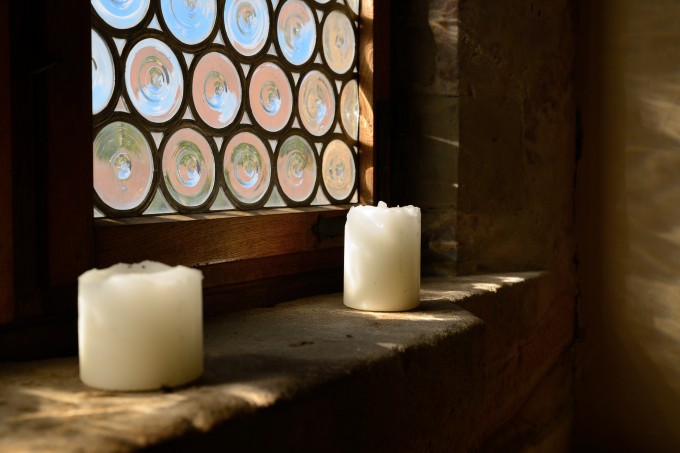

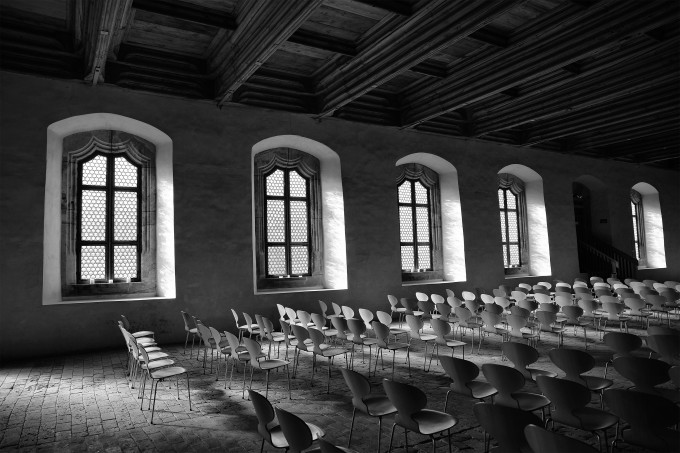
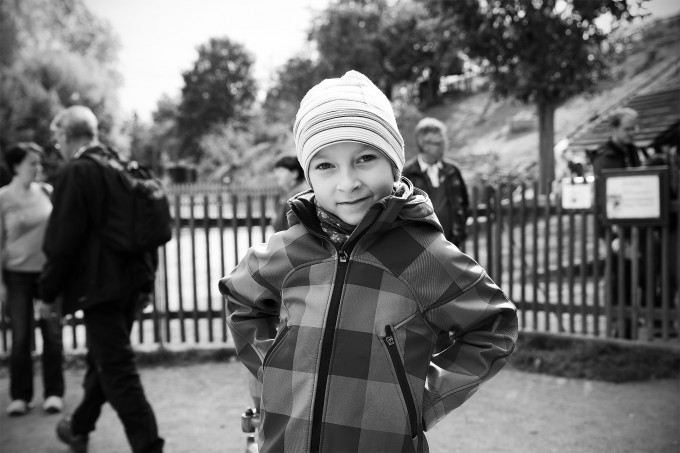
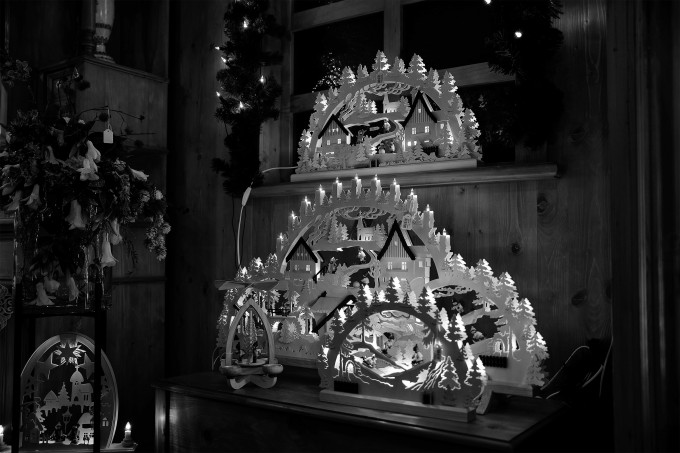
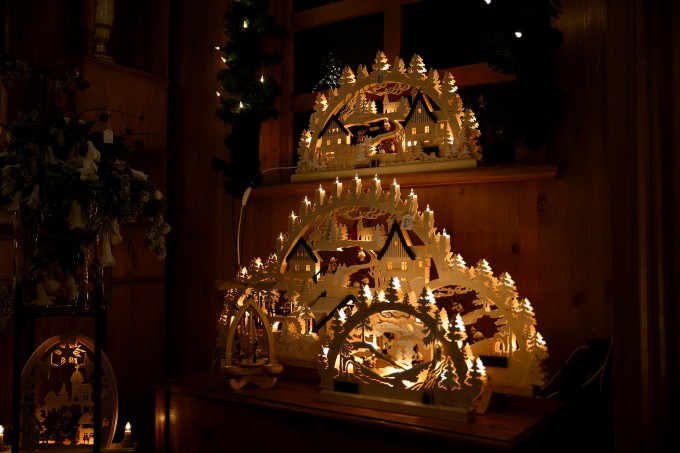
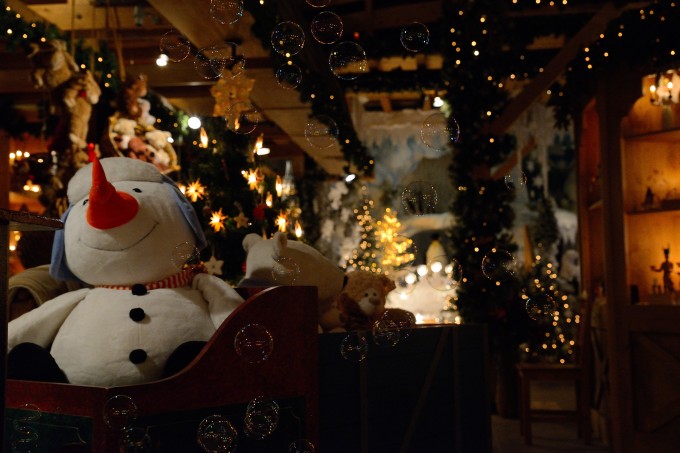

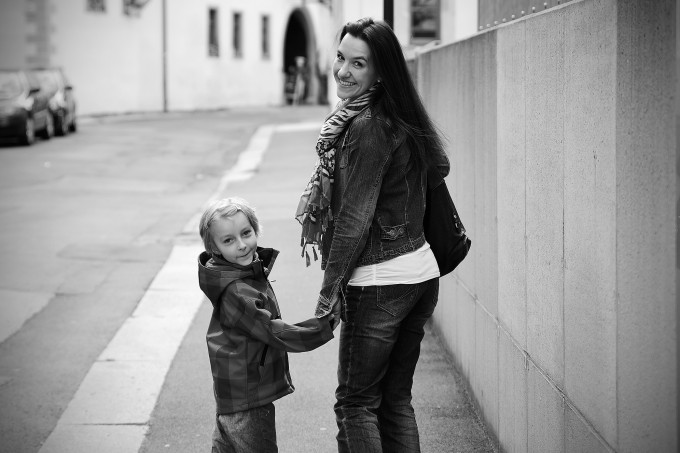
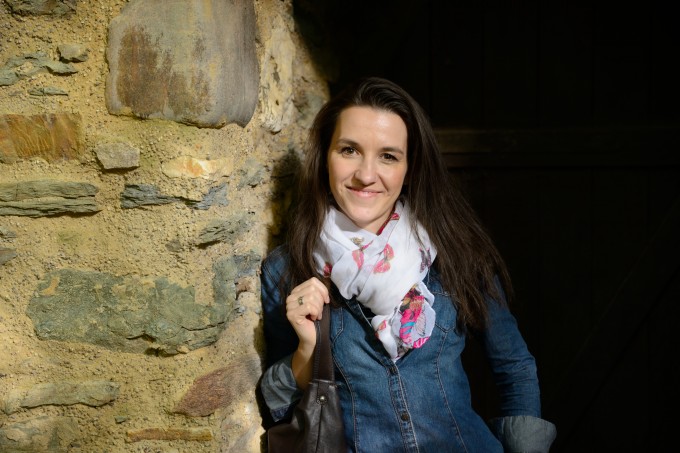
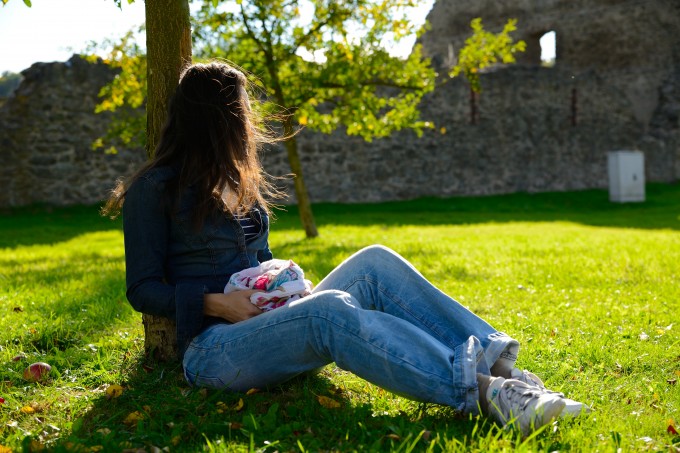
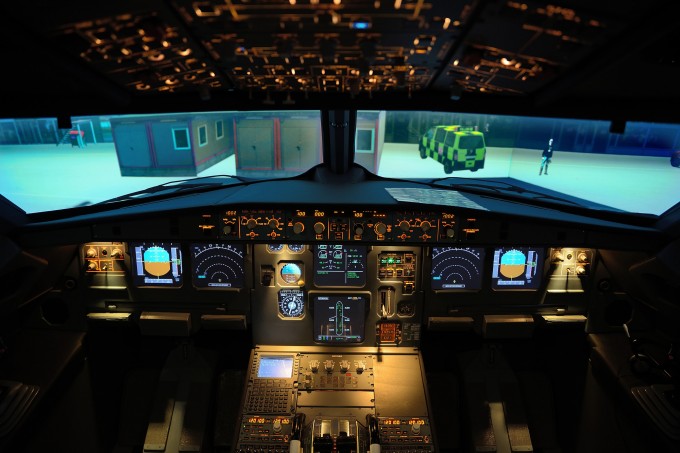
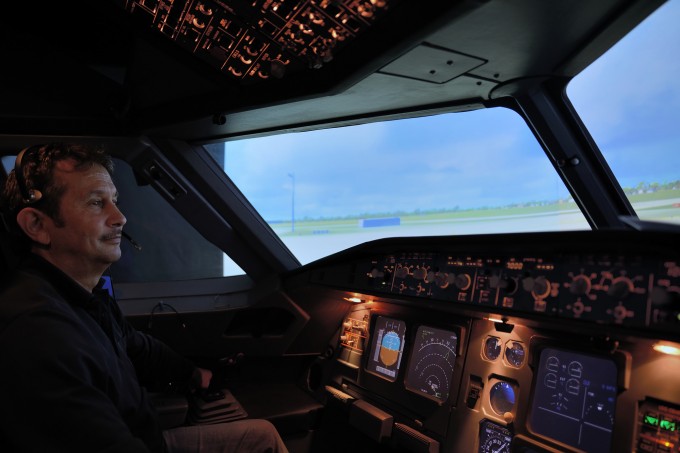
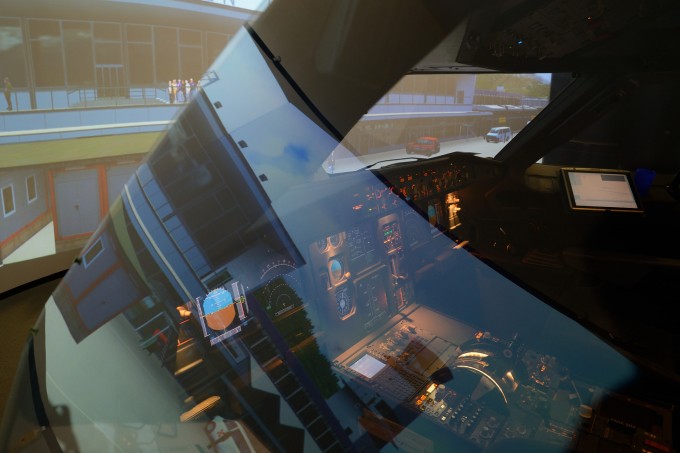
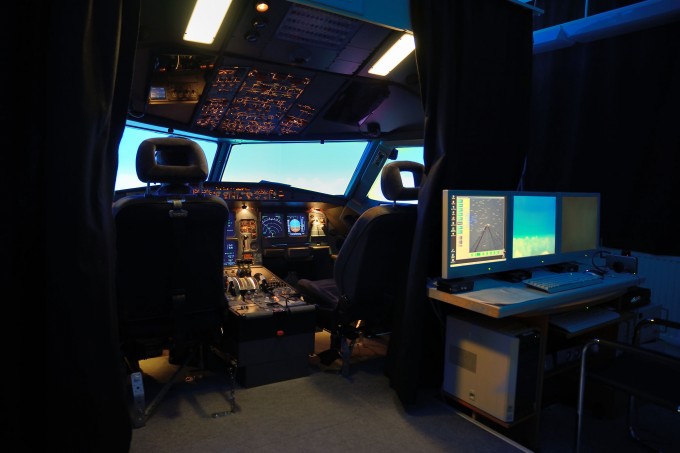
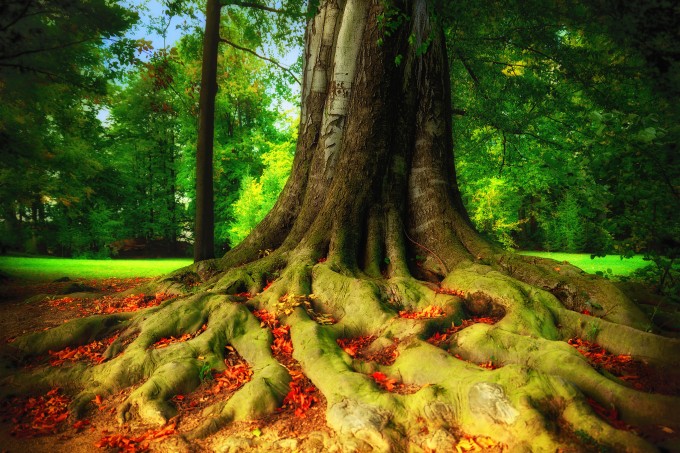
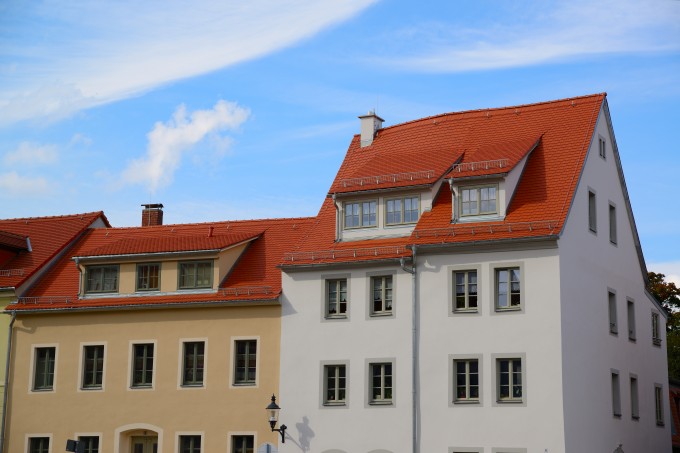
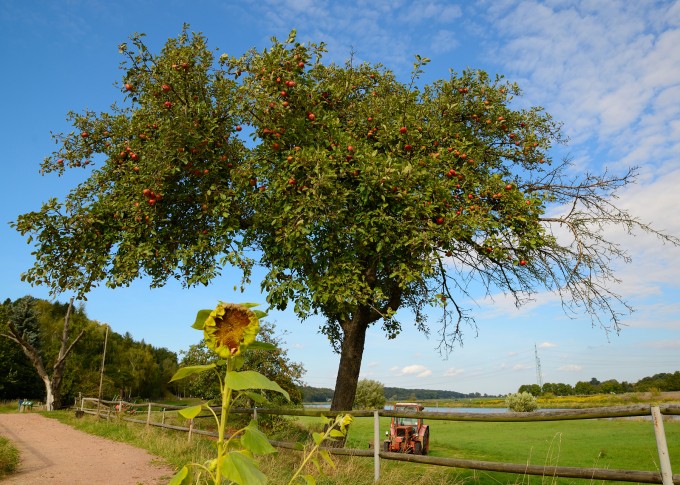
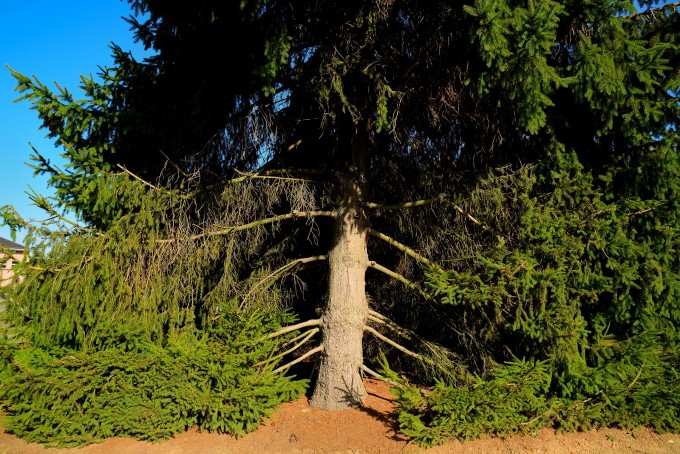
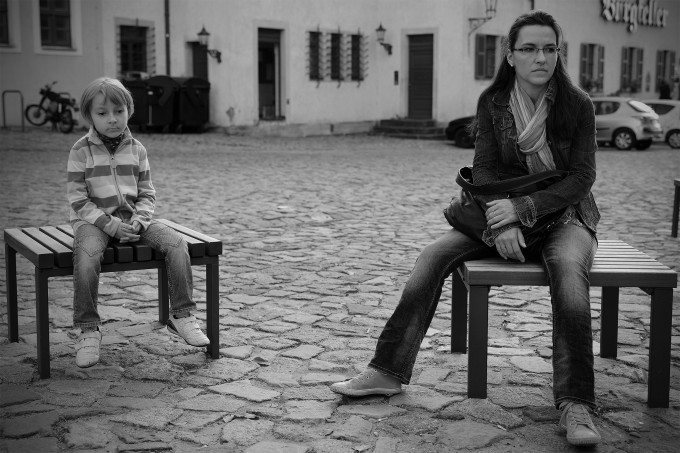
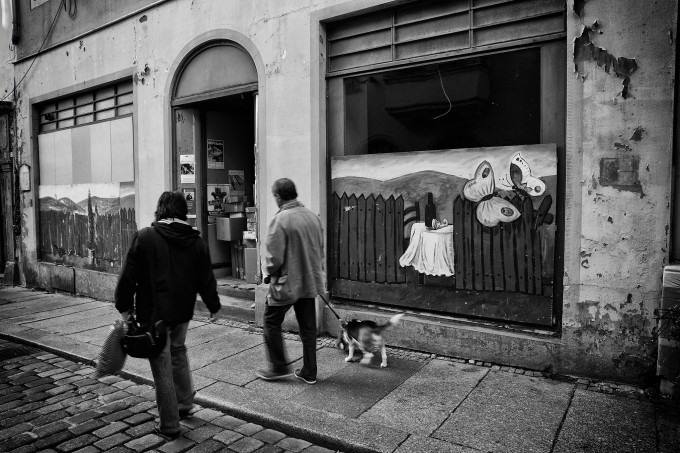
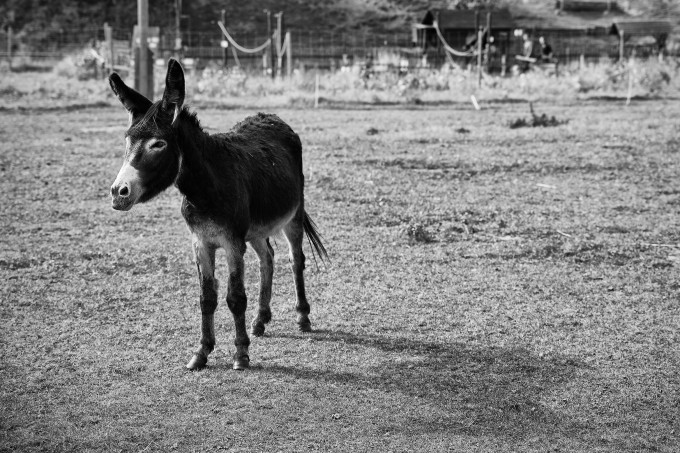
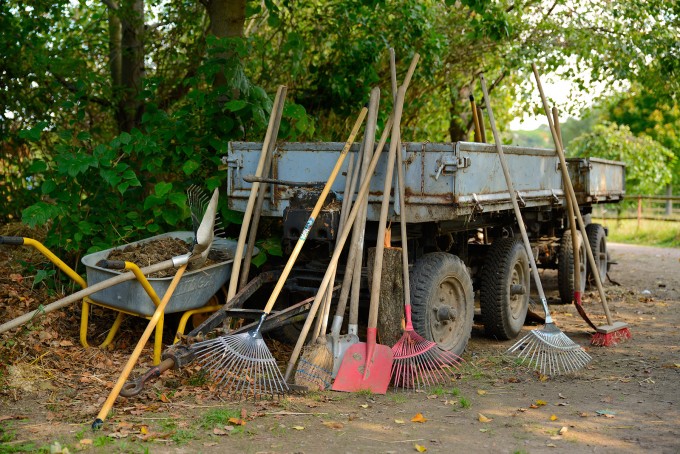
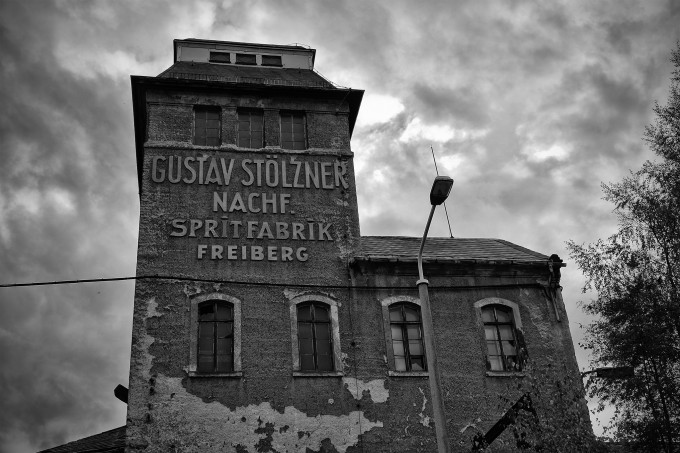
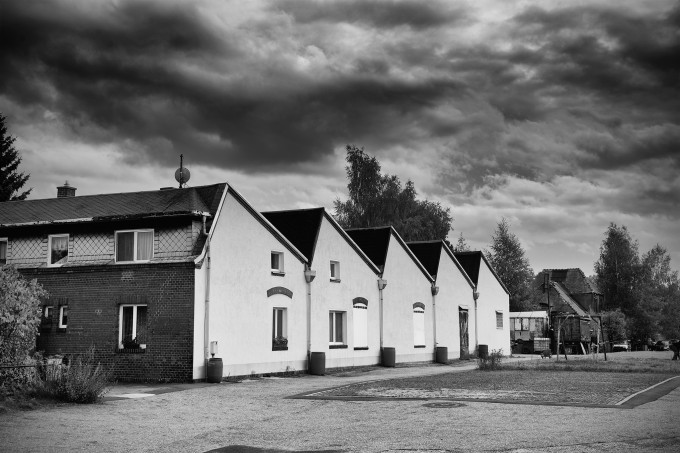
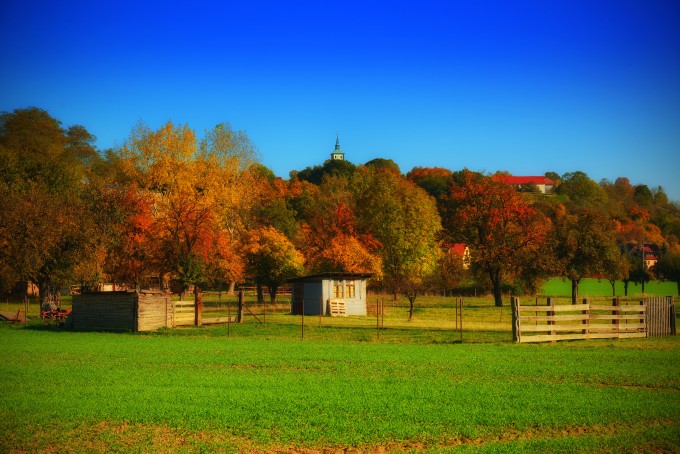
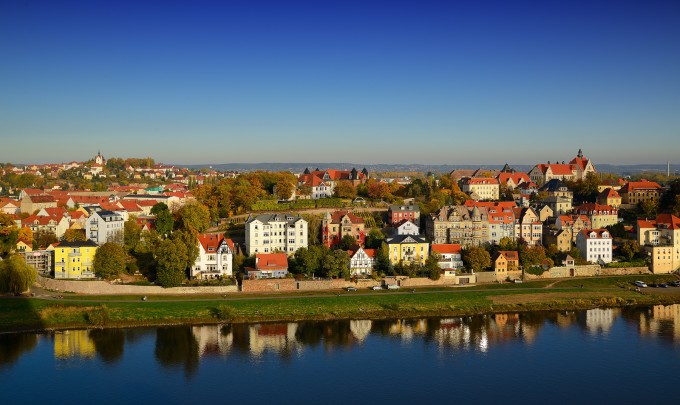
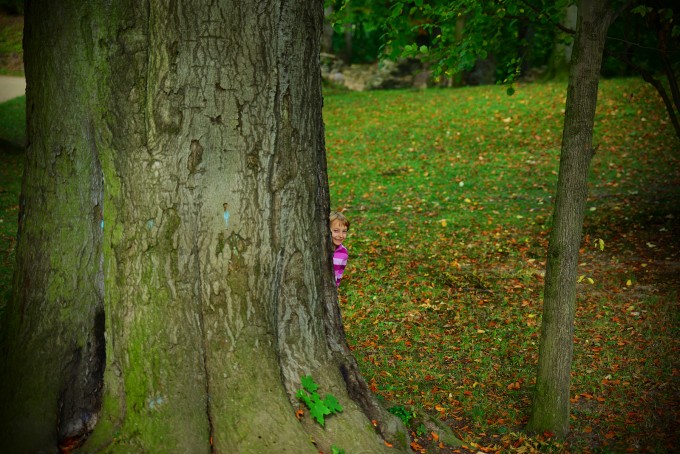
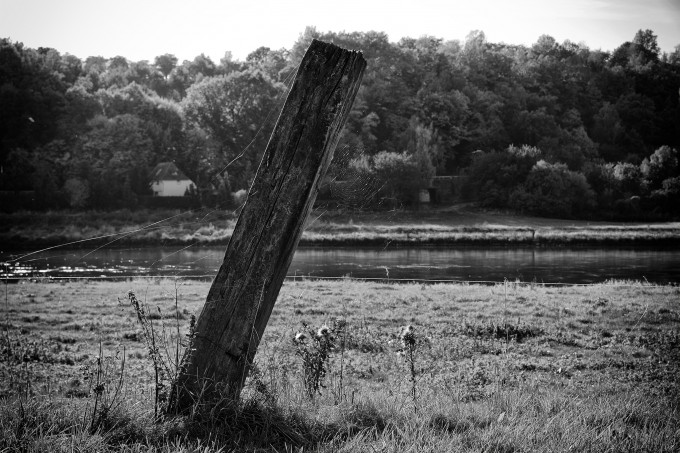
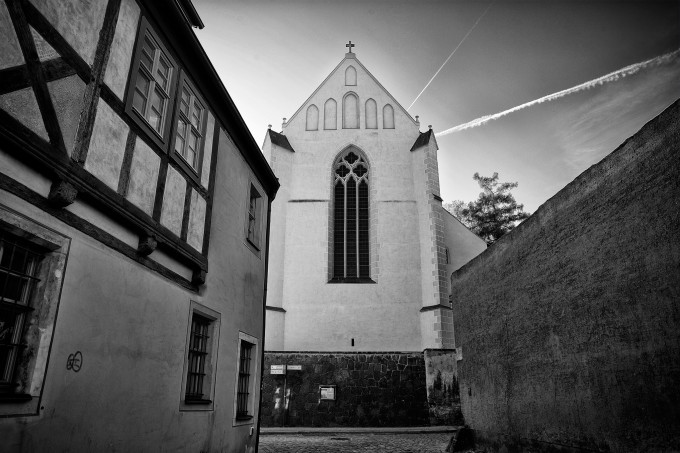
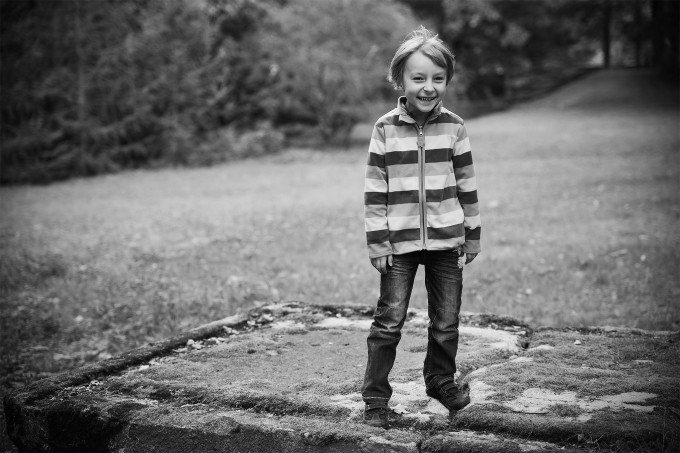


the D600 add some really nice and missing features on the D800, Smaller, lighter, smaller files, same image quality, cheap wifi add on, automatic modes etc … it is the best DSLR ever unless you need more resolution, superior autofocus and tougher body then go for a D800
Hello Joerg,
Great review and wonderful images. I have just bought the D600 with the Tamron SP 24-70 and SP 70-200 f2.8 lenses. After spending all that money, I can honestly say that three weeks later I still have hardly made a picture that has come up sharp and in focus. I have tried every AF setting I know and still no focus. I tried AF Tuning over the weekend, still no focus. Have you or anyone else had any experience in this regard? I am quite envious of all the positive stuff I have read here because my experience thus far has sadly been the exact opposite.
Cheers,
HI everybody
I have the same focus issue with Tamron 24-70 USD on my Nikon D600
Tamron Russia has responded today that the lens requires a new factory firmware
Cheers
Got mine today, awesome camera!!!
Hi I just brought this combo and its awesome .
Great picture quality and easy to use..
The only thing I have noticed is if I leave VC on and use the inbuilt flask the lens VC does a bit of a shudder. Turn it off and its fine.. I usual do have it off but sometimes I forget..
In all other cases the vc works great..
Could you please try the same thing on yours and let me know of yours does the same?
Cheers
g’day Jorg, thank you for the review – I enjoyed reading this and the photos you have used really demonstrate the capability of this camera (and your skill too!)
Usually I fall asleep reading camera reviews but this was great and its given me some good ideas to try with my D600.
I am curious to know, how did you deal with the dirty sensor issue?
Nikon are currently fixing mine under warranty, they say it is not oil just dust that is generated by some internal part. Their process to fixing this is to firstly clean out contamination from the camera and clean the sensor, then if this does not resolve the issue they replace the affected part. I do not know what this part is, but time will tell if replacing it solves the problem.
My Nikon D70 required me to clean the sensor every once in a while. For those newbies to interchangeable lenses, the mere change of lens drops debris into the mirror chamber and eventually onto the sensor. With that experience behind me (about 8 years to be exact) I purchased the D600 w/
lens kit. A remarkable camera to say the least. My first DSLR was the Fujii S1 Pro – $2500 without lenses about 13 years back. At the price point I bought the D600, IMHO, they’re giving this jewel away.
Quick, flawless in most aspects, its an up to date machine.
The first Nikon I owned was a Nikon F: I’ve never changed brands. From the F I went to a F2 F3 FS. Amen
Great Review & Information Joerg! I too stumbled upon your blog while researching the Tamron 24-70 Lens. I have been shooting with a D200 – it is ready to “rest” for sure. I was ready to pull the trigger last fall on buying a D600 and suddenly got wind of the dust/oil issues and decided to wait. I am hearing that a “few” more people are not having dust issues as with the earlier production runs, but that it is still an issue. I feel a bit gun shy about paying $2,000 + for a camera that comes with serious issues like dust and oil. Some say shoot for 3k or 4k images and then send it back to Nikon to be cleaned. Others say it will “just go away” with time. So, my question to you… have you, or anyone else, heard that this issue has diminished or been resolved by Nikon? I do not need a D800 for assorted reasons (too big of files, $$, etc.). I am also seriously interested in the new Lumix GH3. Thank you again for a great job…
Dale
I heard that the dust issue goes away after a couple of months of usage. Have your sensor cleaned (or do it yourself) after a couple of months and you should be fine.
Question about the Tamron 24-70: are you using any filters (such as a polariser) with that lens?
I ask because I’m about to upgrade my D7000 to a D600 but I’ll need another std lens as well. (I currently use a 17-55 f2.8 DX lens).
The Tamron has an 82 mm filter size if I’m not mistaken.
Excellent setup Joerg, I have Nikon d600 but my money is not enough to buy Tamron 24-70 so I just bought the 24-85 kit lens, and I am planning to buy a Nikon 50mm 1.8 I’d heard the af so fast
I have Nikon 35 1.8 but that’s for cropped sensor so I planning to buy 50 or 85mm lens…
BTW great review Joerg
Thanks very much for your review. I found your site looking for reviews on the Tamron lens. Thanks for the info, but another question regarding the Tamron. Some folks think it is soft in the corners. I am not worrying about that given your excellent photos. Wow, hopefully I can improve my skills, but I don’t have the wonderful venue to take shots in. What a beautiful place to live!
My question about the Tamron is whether you have noticed the “aperture issue” that some on DPR have mentioned. I’m specifically referring to what I think it the aperture not changing up between 2.8 & 4. I may be slightly characterizing the issue, but I think you know what I’m talking about.
I’m desperately in need of a new camera… using an old D80, and really am waiting on what will hopefully be the replacement for the D300s aka D400. However, after seeing the photos you shot I need to stay away from the online retailers as I’m tempted to order one. It would be nice for Nikon to acknowledge the issues with the D600 & D800 though. Not exactly what one would expect from a firm with their reputation and also the not inconsiderable amount of money folks lay out for the cameras.
Thanks again for some absolutely stunning photos!
Nikon D600 camera is designed smartly and is quite fast. Features are Photo quality is good, colours were looking appealing, bright, and saturated, darkness and low light, 5.5 frames per second for RAW and JPEG.
good review.thank
Thanks for the review, you’re an amazing photographer.
Thanks a lot, Luciano!!
All in all a very interesting read. I have in the past 40 or so years gone from Nikon Ftns 35mm film with about 4 or 5 lenses, then finally succumbed to digital. I first put my toe into the water with a Lumix FZ50 which was a sort of comprimise having considered a Leica, but the expense was far too great with a family growing into University etc.
As much as I liked the FZ50, I knew that sooner later I would get back to my first love ie. Nikon.
So it became a D7000 for me, but somehow it wasn’t quite right.
A stranger taking pics alongside me recently suggested I look at a D600. He said with a warning that if I went to a FF like a D600 or even a D800 as he was using, to allow the $$$ for quality lenses to get the best out of the camera, or start by ditching my DX lenses and getting a head start with a couple of Nikon FX lenses starting with a Nikon 50mm 1.4 or 1.8 then a 70-300 VR. This I have done and honestly, I am so pleased with the results,I don’t think a move to a D600 would make much of a difference to me.
So FWW, I am sticking with my D7000 until something much,much better comes along.
I heard this from many D7000-owners: the difference in quality for most people is not big enough to invest the 2k for the D600. That says something about the D7000 – it is a great camera with good picture quality and very pleased users. I understand this attitude. If one got used to a camera and is satisfied with, it makes no sense to throw it away for buying the newest device if there is no huge benefit.
Using the new Capture 1 Pro 7 from Phase One is claimed by specialist’ to pull out about some 50% extra pixels from raw files, because of a total new raw-engine. Might be the cheaper way to get a D600 to look like a D800, if thats a wish. But they(D600/800) still can’t compete with a Sigma DP2 Merrill in sharpness I think.
Thorkil
The dp2 is a very special device, would love to try it out! Anyway, thanks for the hint with Capture 1 – will check that out soon! Sounds interesting!!
C1 Pro vs 7 requires 64-bit sytem, so I just waiting for an upgrade when I’ll have an computer specialist by my right hand. Someone claimed he got doble up in pixels. And one can clearly see diffent places that it brings out more details, more sharpnes.
Yes the DP2M, but for my part (being a bit elder, coming from Hasselblad, Leica, and sold my D800E I had that feeling and need for scaling down. And if you ever get that feeling, buy a Ricoh GRD IV, I tried it out in the dark wood yesterday evening, and just learned the different settings while walking. Its very very userfriendly and can do some awesome things. If you have a longing for “anarchistic” shots, this will be best ever tool in your hand. So the more refined delicate pictures for what the DP2M is designed will have to wait. And the GRD IV acts somewhat like my Leica M6. And can do some very grainy film-like pictures like old B&W films pressed to 1600 or 3200.
Thorkil
I think these photos are gorgeous. Computer monitors can be deceiving but these photos look smooth and detailed, with velvety blacks and seamless transitions from grey to white. The colors are saturated and gorgeous. My two favorite professional photographers in the world are Kristian Dowling and Jeffrey Harmon. They both happen to use Nikons. I have had photography lessons with Jeffrey Harmon and he has “politely” encouraged me to jump into DSLR’s. Reading between the lines, I know what he meant. The thing is, I think he’s right. I just can’t bear to depart with my Fuji X100.
Wow, thank you! 🙂
I think these photos are gorgeous. Computer monitors can be deceiving but these photos look smooth and detailed, with velvety blacks and seamless transitions from grey to white. The colors are saturated and gorgeous. My two favorite professional photographers in the world are Kristian Dowling and Jeffrey Harmon. They both happen to use Nikons. I have had photography lessons with Jeffrey Harmon and has “politely” encouraged me to jump into DSLR’s. Reading between the lines, I know what he meant. The thing is, I think he’s right. I just can’t bear to depart with my Fuji X100.
David, just try a D600 for a week with, for instance, a Distagon 2.0/35 ZF.2?
Michiel, Interesting. Why do recommend the Distagon 2.0/35 ZF.2?
Because it’s a fixed focal length, manual focus lens of great quality. The moderate wide angle will enable you to do almost anything, and the “feel” of the camera, used in A or M, will come close to the most simple form of photography. View the scene, visualize the scene, assess exposure, finetune exposure and focus, shoot. Use it on a wriststrap, that will take the load of your neck and shoulders.
Jörg, maybe I’m overanalyzing stuff but: I recently bought a d600 with a 50/1.8g and a 85/1.8g. And I can’t never really get that super crisp sharpness from the files when looking at them really zoomed in. I see the same thing with your portraits posted here. Im getting similar results so my question is; Is the the quality that I should expect? Ps. I know that nobody never really look at the images that zoomed in but I really like it when it’s tack sharp!
Kindly,
Filip
Get a D700. They’re going cheap now. 🙂
Puh, thats difficult. I’m only able to compare it with the Canon-7D-sensor-generation and thus the D600 is really sharp. Do you have any examples for such a super crisp sharp picture? Maybe its a camera with a very strong jpg-sharpening? Thats a really interesting question and I would like to analyze it, but first I need some visual input what you meant with “super sharp”. If you have such a pic, we could have a look which aperture has been used, which type of camera is it, which glass and so on.
The D600 is “supersharp”, as is the D800, D800E and the D700. All if used raw, and processed properly. In my case, D700, I never apply any sharpening (or noise reduction for that matter) at any ISO value. I stick to LR4’s presets for the camera, which is +25 for sharpening. Looks great and natural, and very sharp. More modern cameras/sensors will be better. The merit of that improvement is debatable though. For very large prints and for pixel peepers it will mak a difference.
Thank you Jörg for your fine review and statements.
Just for the fun of it, I can tell you that I just sold my D800E, simply didn’t got enough use out of it.
Right now I’ve gone in the contrary direction, on my way to town, to buy a Ricoh GRD IV, wonderful camera and thru pocket-ability, perhaps going later on to have a Sigma DP1 Merrill. And perhaps, perhaps later on, if I’ll ever need it anymore a D600 when Nikon have made a small wide, cheap , high quality zoom. But perhaps I’ll never return to the big chunky DSLR-marked anymore.
Simplicity, refinement in the small….thats life.
Best
Thorkil
The Sigma DP1 is an very interesting camera! Read a lot about – a fascinating sensor. The color quality must be superb!
Yes. Its Medium-Format sharpness in a litle cheap package. The DP2M is even better, sublime it looks, but 45mm. Truly a Hasselblad in the pocket. But if wide is needed its the DP1M(28mm), but with a tiny bit cornersoftnes.
Thorkil
How is the lowlight quality on those sensors?
Perhaps their biggest problem, while its bad, very bad above 400 Iso.
So, an exquisite camera for daylight or tripods, or very steady hands.
Thorkil
From time to time I’m thinking about a second camera which I can take with me wherever I go. The DP2M is one of the nominees… 🙂 Perhaps one day.. 🙂
So Thorkil, you detest big chunky dslrs, but don’t mind a tiny camera that requires a tripod?
You learn something new every day.
🙂 Michiel…no…I would actually mind walking around with a tripod(!), and thats why I’m on the Ricoh GRD IV just right now, because I’ve had a dream for several years about doing hasty intuitive shots with a camera that could act like my M6. And the GRD seems to do, but I don’t know for use yet, so the Merrill will have to wait while I try to have my dream confirmed or shot down.
Thorkil
Nice review. Thanks.
D600 got pretty good review from DPREVIEW.com also(scored 87% better than D800’s 82%). I’ll wait for Sony RX1 and Leica M’s reviews before making an decision.
So many replies to a DSLR post in this blog… Who would have thought it was possible? Thanks Steve!
Its a little bit overwhelming… I’m amazed too. But I’m also amazed about the friendly community and the peaceful discussion – something you will not find on most forums today.
This is not the usual flaming war environment, as in DPR… 🙂
Nice looking family! But I have to ask: A HOME COCKPIT?
Yes, this is the “second hobby”… 🙂 Since this site is dedicated to photography, I’ll keep it short: at my homepage look at Portfolio – Project Airbus. There is a link to the homecockpit-site with more informations, pictures, videos. We plan a very long and big video in the future (using the D600!) where we will explain and show the whole project in action.
Great D600 review! Just what i have been waiting for.
I have not make the decision to buy yet due to aperture issue for video (hope get fixed in the new firmware) and it sounds like D600 will get dirty more easily compared to other DSLR from some review i have read?!
It seems, the dirt arises from the manufacturing process. So it’s from “within” and hopeful it’s gone after some weeks. From the outside (lens change) the camera is not more prone to dirt as every other camera.
I suppose, Nikon is aware of that (even if they don’t admit that) and the next units will be clean out of the factory.
Honest review.
Jorg..you talked about the camera a lot in the interview…what did you think of the lens??
Bob, just have a look above to Comment Nr. 27 – Roy Strutt. I second that. In the corners it is not as sharp as the Canon 24-70 2.8 and there is light vignetting at f2.8 – f3.5 or so. But it is cheaper and it has a stabi built in – so often it is said, that it has the best cost-benefit-ratio – and it’s the only one with stabi (and the sharpness is still superb).
Good thorough review. Nikon is always a Nikon. I have owned 2 D700s in the past they were awesome camera though their sheer size especially when you pair it with 24-70 and 70-200 combo makes it unappealing… Huge heavy lenses and bodies. I had a backpack just for the camera when I went hiking. Now my cameras have gotten smaller. though I still own one small DSLR for the functionality and image quality is not compromised with apsc vs ff. I only notice it when I want to shoot with really shallow dof…really. As my dslr is k5 with really wide dynamic range and excellent ISO performance so I am covered on those situations.
Who needs zooms, huge or otherwise? Go with primes, and see how much of a difference that makes in “seeing” your image, and in portability.
“Who needs zooms, huge or otherwise?”
People who don’t see what’s so portable about a bag of primes.
I actually didn’t mean portability per sé (though two primes, one on the camera, one in the bag, isn’t all that much), but was referring to what it’s all for: picture taking.
Using primes forces ánd enables you to take a different approach to the final image.
Hi Joerg,
Thanks for sharing your feel about the camera and nice technical review, wonder where i’ve seen a similar one already…
in The Starting point at the begining of the article,you mention that you prefer making pictures rather than talking about the camera and many pics and few words… that was at the begining..
I wonder to know where are those nice country side pictures taken? Bavaria? i would have like to learn more about the pics, the weather conditions and lightning situation for example. What’s the lovely village name on picture No31?
thanks
A very complex question to answer 🙂 but I’ll try it…
The pictures are all located in east germany (formerly GDR) in saxony. Perhaps you know the city called Dresden, that is the main city in this state. The landscape is mainly characterized by uplands. There is a rich history, most citys are around 800 to 1000 years old and very much of the medieval character is still there. There are a lot of old castles, castle ruins, monasteries, old buildings and many medieval mining traditions (some mines still can be visited). Many of the old “stuff” is really beautiful restored.
You could compare it (for the computer gamers) with Tamriel in The Elder Scrolls: Oblivion. Look at the screenshots of this game and you know it. 🙂
As for the pics:
11, 12, 19, 23, 29, 30, 31
It’s in my hometown Freiberg, a 850-year-old city with a medieval character. The city is mainly dedicated to mining and there is the oldest mining-academy in the world.
The pictures 23, 29, 30, 31 were taken under overcast conditions, afternoon. The light was flat, the world looked almost colorless. Because of the milky sky I decided to go with b/w and I raised the contrast in the skys to bring out more of the structure of the clouds.
The pictures 11, 12, 19 I took on a bright, sunny day with nearly blue sky.
The pictures 09, 10 I took indoor in a dark, candle-light-atmosphere. It is one of the many many old factorys which build those candle archs and christmas pyramids. Those things were invented in this region (called Ore-Mountains, also known as christmas-land) and they go together with the mining traditions in this place.
The pictures 07, 20, 22, 25, 26, 27, 28, 33, 34, 36, 37 I took around a small city called Meissen (near Dresden) on a bright, sunny day. This is the only region in east germany where you’ll find some winegrowing (because of the mild climate). It is also a very appealing region with the highest density of medieval castles and museums and exhibitions. One could say, the whole cities are museums. 🙂
The pictures 04, 05, 06, 16, 17, 18, 32, 35, 38 are from a very old medieval monastery near my hometown – one of my favorite places – on a bright afternoon with blue sky and a few fleecy clouds. There are trees which are hundreds of years old, old ruins and you are able to go everywhere (without the usual safety barrieres). The whole place permeated by an incredible amount of silence and peace. There is also one of the most important stud farms in this region (originating in the stud farms of the old kings and emperors.
If you are interested in the region have a look at my homepage from time to tome – I will show more pictures of all that in the next time (some pics are already there).
Anyway, it’s always worth a travel. 🙂
Too funny. So German! I wouldn’t expect anything less.
As for me, although I love my home, I would like more to live in the big international citys. Love the spirit and the vibrance there. The countryside is nice but a little bit old fashioned and the people are some kind of unapproachable some times. But what did you mean with “so german”? 🙂 The long answer or the heavy advertising for my home? 🙂
I meant the long, thorough answer. ; )
Ah, ok! 🙂 🙂
Great article and images – thank you
I can only agree regarding the 24 – 70 Tamron – I was about to change to the Canon 24 – 70mm f2.8L II at £xxxx and I read reviews of the Tamron – I bought it and have since sold the Canon 24 -70mm f2.8L mk I
The Tamron is really great – just missing the red ring !
Before I bought it, I really thought long about. I had the Tamron 17-50 2.8 at my Canon APS-C and this had a frontfocus-issue like other Tamron-glasses. But with the 24-70 – I’m satisfied 100% ! And compared to the Canon 24-70 2.8 it’s a bargain!
Nicely written. Great job. And great pictures, too.
The D600 does have a Sony sensor – this is now confirmed and there is a strip down you can see on line where someone takes the D600 apart and you can see that Sony make the sensor.
The same sensor is in the Sony A99. I must say the A99 looks like my perfect camera !
But is it true, that the A99 get not as much light onto its sensor (like the D600) because of the translucent mirror? Or is that nonsense?
Good review Jörg; thanks for sharing! I considered both the D800 and then the D600 to replace my almost three years old D700; they’re both smaller and lighter (the D600 more so of course).
I decided against it for the time being, as I didn’t see the big jump in image quality, though the carrying around part would improve by 100 to 200 grs (wow!). Also I found some aspects of the D600 (viewfinder, multi dial) to be a bit too small. Great camera though!
The D800 is a great camera and I have a deep understanding for everyone who bought it! 🙂
Sorry, misunderstood. You kept your D700 ? It’s a great camera though. Many people who own a D700 didn’t move either to D800 nor to D600. It has a even better build quality than the D600, isn’t it?
Well, that’s what I meant. I would have liked the D600 to be less D7000 like and more D700 like. The image quality can’t be faulted though, and might be better than my 12MB D700… 🙁
My only comment, apart from the/your images are really good, is get rid of that very acceptable zoom, get the affordable 1.8 35, 50 (you’ve got that one) and 85. That’ll really get you going!
The affordable Nikon 35 1.8 – I supposed that is a APS-C-glass??
My mistake; I thought there was a 1.8/35 AF-S FX by now; there isn’t. Consider the 1.8/28 AF-S FX instead; great lens, affordable, might make a better companion to your 50.
Ok, thanks, I put it onto my Amazon-wishlist! 🙂
Thank you for the thoughtful real work review. I do have one question.
What is this “one RAW” software you write about?
I cannot seem to get a hit on Google for it.
Thanks,
Craig
If you want to use the Nikon stuff (only this software speaks the native RAW-language of the .nef-files) there are two possibilities:
1. CaptureNX 2
Expensive (around 170 Euro) and complex, but powerful and with the very good u-point-technology (from NikSoftware)
2. the standard Nikon-RAW-Converter Nikon delivers with your camera. It is much simpler (only the most important sliders) but for most pictures (I use it for 70% of my pics) its enough.
Aperture as well as Lightroom will work as well but it won’t give you the same quality (depends on the picture). Plus you have to fiddle around with the sliders longer to reach the same result as with the Nikon stuff.
Maybe there are some Aperture/Lightroom-gurus who disagree but thats my experience.
Jörg,
Does the lens (24-70) vignette your shots in the long end?! Like in the last photo of your son. At medium zoom it is not evident at all, but in some shots it is. Please enlighten me ;-)!
Danke,
Tord
I guess you’re using Nik Colour Efex?
There is some vignetting at f2.8, but not in the long end. What you saw was my addiction to vignetting every image – I love it! 🙂 So I used photoshop and/or ColorEfex / SilverEfex for that and other tweaking. I love SilverEfex – because of the speed you will reach with this tool. Building the same look in Photoshop is sometimes hard and time consuming (not for the absolute Photoshop-freak but for most people).
Many thanks for the kind words to all!
Has anyone read about the upcoming Sigma 35mm 1.4 prime? They promise a very good quality since they updated their quality management. This lens even has an USB plug for finetuning and updating. Sounds interesting! Could be another good choice for the D600.
Their (Sigma’s) 30 & 19 are superbly sharp (the former available for M4/3 and both available for NEX) are superbly sharp (according to Lens Rentals), and are surprisingly small and cheap! So a 35 would probably be just as good!
Thank you Jeorg for the write-up however overall I’m not impressed as I find the blue color of the skies in the home cockpit not very natural.
Best Regards,
ACG
That’s how the computer – simulator software – graphic card – projector does it. It’s not the fault of the camera. The simulator (FSX in that case) shows this kind of comic-blue-sky, perhaps we will update sometimes to a better (more expensive) visualization system.
Thank you for your great review. Bought the camera two weeks ago and loving it, but it was still interesting to read your review. And especially to see the pictures. Lovely work!
Joerg,
I really liked your review of the Nikon D600.
I want to know how a camera feels in use and how happy it make its user feel iwth the results. You certainly left no doubt in my mind in regards to you and the D600.
I have been using my D70 for the last eight years (ancient for a digital camera) and the last several have been with the Nikkor 50 mm f 1:1.4 D lense. If I get a new Nikon, the 50 mm will stay. The D50 kit lense will stay with the D70. I did get some decent shots at the Giant’s victory parade in San Francisco a couple of weeks ago, but the limitations of the D70 were obvious.
You do bring up an excellent point: quality controll issues with Nikon gear. The D800 has focusing issues (including focusing issues with the left set of focus points) and the D600 has dirt issues on the sensor. I’m sorry, but Nikon’s Cleopatra attitude (queen of denial) is just not cutting it with me. While I would dealy love to purchase a D600, I’ll wait untill they “get the bugs worked out”. If they don’t, I will (reluctantly) consider Canon. They have an affordable full sized sensor camera comeing out soon, right?
Anyway, I really enjoyed your review of the D600 and found it very informative.
Paul J. Stiles
Mountain View, CA, USA
Honestly, I’m not happy with it, but you are right. Although I love the camera, as I wrote, I was a little bit shocked about the dirt problem. Should not happen with an 2000-EUR-body. It is even more strange, that Nikon Germany stated: “There is no problem!”. Such an extremely nice camera on the one hand, and then those issues on the other…
(same for the D800 focus-issue – such things shouldn’t happen!)
Awesome plain review and great pictures. Looks like the Nikon D600 is a gem of a camera. I just started with photography and I own my first ever enthusiast digital camera, the Sony NEX 6. I wanted a smaller body and hence I stuck my choice on the NEX systems. As I read through your review, I learned some tips. I will try to use them when I shoot with my camera. Thanks for that.
Even I was fascinated by the IQ from those retro looking Leica cameras and longed that I would buy that one day. Till then it will by my Sony NEX 6 and loads of fun with it.
The Nikon is not a beginner camera, it has the same pasm modes any pro camera has. And at 2 grand, it may be cheaper than any leica m digital, but it’s no steal either. the less you think about what camera is in your hand, the more you learn about what you’re doing. The camera has become a barrier for many people.
Thanks for the article I really like the new nikon cameras I think they are all winners and you can get a camera and 2 prime killer lenses or 3 maybe for the price of a Leica M I have the D 800 and love it Nikons work well with there older manual focus lenses add a nikkor noct 58 1.2 and you have an equivalent to the noctilux enjoy thanks again
Really nice review!
Like Joerg I have had mine for a while, and I can just agree: A lot of camera for not that big a heap of money!
Interesting choice of lens, by the way. I have the 50/1.4G, which is supposedly sharper than the 1.8G, and the 85/1.8G, which is superb! My favorite lens is the 70-300 VR, that works equally well with the D600, my D3200, and my V1!
The 70-300 is at my wishlist!! (Dear Santa…)
Great article Joerg, your passion shines through! I’m not really an SLR man but your critique and the shots you have posted are excellent and got me thinking…
Nice! Congratulations and may you enjoy it for long.
Thanks a lot Joerg for this review. I like all your pictures. But what’s not so cool? Easy to say, your Tamron at F/2.8 it’s like a punch in the face. I’m sorry to say that I can’t see any details in your wifes hair (and in many others pictures).
Get your eyes checked. There’s TONS of detail.
I see lots of detail. I also think that what you’re seeing is that Joerg likes more contrast and he has adjusted the photos in post processing, which he said.
If could upload a RAW if you want. Just contact me via my website.
Thanks for your review. Well done. Have you tried DXO Optics Pro as your raw converter? You can try before you buy. I’ve used it with great results with a number of cameras. I downloaded the newest version that includes the Nikon D600 in anticipation of my cameras delivery, but I put the brakes on when the sensor dust issue reared it’s ugly head. The software takes a little time to figure out, but there are a few presets that bring out an inner glow that I can’t get anywhere else. I then import the picture into Photoshop. It’s also made to work with Lightroom.
Will try it! Thanks for the advice!!
With all the respect for (full frame) DSLR cameras, after using my NEX system for a while that this cameras simply look huge and ugly to my eyes =X
For a hobbyist user, i think this is totaly unnecessary. That’s my two cents.
Cheers!
By the way, good photos Joerg 😉
Thanks! 🙂
WOW! Almost sharpness like a Leica and POP like Leica. Man this is very good news. Maybe I should sell my M8 and buy this Nikon instead.
But if you’re used to Leica and rangefinder, perhaps the M-E, the new M or even a needed M9 is the better choice? Leica is Leica – even if I love my D600 – I would love to get my hands onto an M. Maybe next time in Berlin I will rent one for a few days.
Perhaps Leica is the better choice, but money is also a concern. If you go with Leica M and Leica optics it will be a huge meteor crater in you wallet. With this Nikon or D800 it will just be a gravel pit.
Leica should do a medium product above the x1 or x2 – perhaps like Apple: “designed by Apple, california, assembled in china” they could say: “designed by Leica in germany, assembled in china”. Perhaps the body only – a RF body for abot… 3000 bucks or so. But that will never happen. I think, Leicas engineers would shoot me for this idea… 🙂
“Almost”? What’s that supposed to mean? Do you imply you can actually determine a difference in sharpness between these images and “Leica” images? That’s pathetic.
Pity I have a bag full of Cannon L lenses. In an ideal world we would be able to mount any lens to any camera.
Perhaps you could take the upcoming 6D ? Sure it will be a nice camera too!
Dslr’s are dead. Mirrorless cameras are in. Only fools still used dslr’s. I pity anyone who still uses dlsr’s
and i pity you…. 🙂 With my best regards of course
JJ – your comment makes you look arrogant and clueless. You really are to be pitied.
Agree.
Yes. DSLR’s are dead. Their worldwide sales are triple that of mirrorless. Dead as a dodo. Dead as the parrot in the dead parrot sketch. Demised. No more. passed on.
I think the fullframe models will stay a little bit longer but for APS-C – I no longer see any reason to carry that heavy stuff around.
I agree with you entirely Jorg; DSLR users are pining for reasonably compact full frame dslrs. They’ll come!
P.s.: “pining” is what the dead parrot did. A Norwegian Blue, pining for the fjords. Not dead, pining.
I don’t. When a skilled photographer gives us a moment in time be it in sport, wildlife or elsewhere I appreciate the SLR.
“For anything smaller than full frame you don’t need a DSLR any longer. Period.”
Couldn’t agree more! But who knows RX1 (or RX2) might might make DSLRs obsolete!
If the RX2 will be an interchangeable lens camera, it could make a DSLR nearly obsolete.
… and Sony better not forget the built-in viewfinder. Uuugh, the RX1 is so close yet so far. You could almost touch perfection and then it slips away.
Agree!
You are smart to agree with me, I’am never wrong!
🙂
Ahahah 😀
Except with your spelling?
I’am???
I’m or I am.
Thanks for the review. For people who need medium format image quality, print large and have mastered all the tricks of dslr business, d800 is a must have, especially at that price. If you shoot landscapes using a tripod for instance, d800 will always beat d600by a big margin and is worth extra 500 euros imho.. Plus d600 with a good glass is not that cheap either. Moving up to full frame is a considerable investment no matter how you look at it. The term “being on budget” is very relative here.
Very relative, yes. With the Tamron it’s the same price tag like the Sony RX1 – but it’s more versatile. The D800 is a incredible machine, no question. But for most of the enthusiast upgraders (who wants to shoot family, holidays, lugging the camera around on the street) the D600 fits better – in MY opinion. 🙂
Thanks for sharing! Great camera – bought it myself the day it arived in the stores here. Actually I paid almost as much as the D800 (which today is around $200 more than my D600) but wanted the “smaller package”. Haven’t had much problem with dirty sensor yet, and I change lenses quite often, but are keeping an eye out.
For me the D600 is a nice companion to the X100. Now I’m only waiting on my X-E1 which I should get in a week or two. For some reason only the kits have been available here.
Have you checked the sensor? Aperture 22 and shot the sky – look into the left upper corner?
Wow, thanks for the honest opinion about what’s good and bad. I am seriously considering this camera too, but the live view issue really disappoints me because I really like to take videos as well as photos. I know for certain that I would not want to exit live view to change aperture and then back again. what a hassle. Something to really consider. Thanks again Jorg.
This aperture issue will be fixed with the next firmware update (nikon rumors) 🙂
Dear Jörg,
Many thanks for your frank and informative user review. I am after a portable FF camera and the Nikon D600’s small size really appeals to me. I have been reading up the reviews on the New Sony FF RX1, but for my money, its still a little too pricy for a fixed lens FF. The Nikon D600 looks like a good compromise for physical size and FF capability and price.
Best regards,
Simonjx
Exactly my opinion. At the moment – for me – the best compromise.
Two more updates to the review:
1. The sensor is made by Sony
2. The aperture-issue (aperture is not adjustable within the live view) will be fixed by nikon in the upcoming firmware patch.
Dear Jörg, thanks for the great article. I too, I absolutely love my D600, and I am glad to hear that a new firmware is on its way for the aperture issue in live view. Nikon made a real blunder there IMO.
I hadn’t heard of the potential dust issue though. I have about 3000 shots now, without any problem.
I will keep an eye on it.
Best regards,
Kris
I forgot to ask: what were your experiences withe the Tamron? It looks like a very good and cheaper alternative for the Nikon model?
Thanks,
Kris
I used to have this lens on my old Canon set up. Bought it over the 24-70 L. For the price over an L lens it was fantastic value. Great performer and well worth considering as an option.
Yes, absolutely!
Excellent article and review, sir! Though I am a Nikonian at heart, I am seeking a small “travel” system than this excellent DSLR (with requisite large and heavy Pro-grade lenses). Therefore, I am researching the Olympus OM-D System, which from what I’ve been reading, has quite good image quality. In addition, since there is no mirror box, there is no need for micro-focus adjustment. I wonder if front/back focus is an issue for Nikon D600 users
As for the OM-D, I decided to not step into this system. Why? Well, download some of the RAW sample files from photographyblog.com, including the one showing the facade with the copper cupola and blue sky, and convert them to B&W. The sky around the cupola will reveal a surprise, that made it very simple for me to avoid Olympus’ toys in future (I once made an error when I purchased a Pen E-P2).
JR, You decided not to buy an OM-D because of downloading some raw image samples… Can you please explain what you mean by the black & white convert ‘surprise’?
I download just that same image and made a B&W conversion in both Lightroom 4 & DxO Optics 8 and I couldn’t find any issues at this moment. Not sure what to look for either. They used the kit lens 12-50mm, while maybe not really bad, not especially the best lens for use with an OM-D.
I make a living with photography and cameras are just! equipment. But to call Olympus ‘toys’ is a bit rough, don’t you think. I had frontpage pics with a Lumix LX-3 I couldn’t take with any of my bigger gear at that moment. Or they were to big, or I hadn’t them with me. Catching the moment or that particular shot = more important as having for example a D800e or not.
Front/backfocus can be an issue, depending on the lens. I heard of others who even had those problems with nikkor lenses. The D600 however has a feature to microadjust that. I haven’t tried yet but it’s there.
By taking the time to write this and share it with Steve Huff’s following, you have given amateurs like me a lot more than reading DP Review’s technical stuff. Thanks for a job well done. And by the way, your English is just fine!
Thanks a lot!! 🙂 That’s what I love about this site – the non-technical, more picture-oriented approach!
Really good review and smart thoughts =) Thanks
Amen to that.
How did you setup the image processing? That mainly controls how the jpgs will come out of the cam, so rising up sharpness and contrast should change that quite a bit.
You are right. I made the first jpg-pictures in standard-picture-style and then went away to RAW. I checked the other styles (Landscape, Brilliant…) later and yes there are more sharpness and color (I even could tweak it further). But now I’m used to the RAW processing and I love to tweak the hell out of the pictures… 🙂 But yes, if one is not interested in RAW the jpg output is nicely “tweakable” (sharpness, contrast, saturation, tone, brightness).